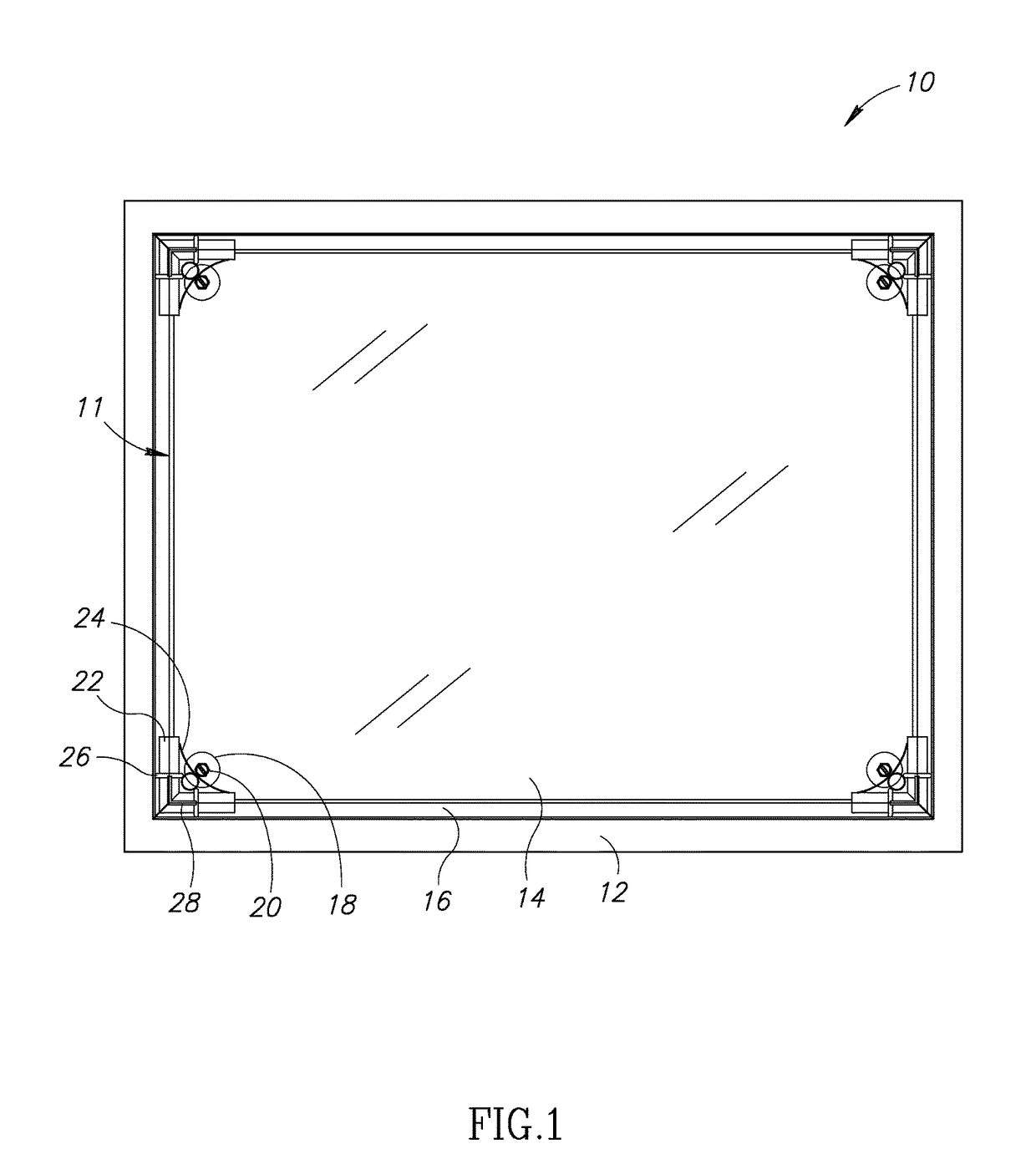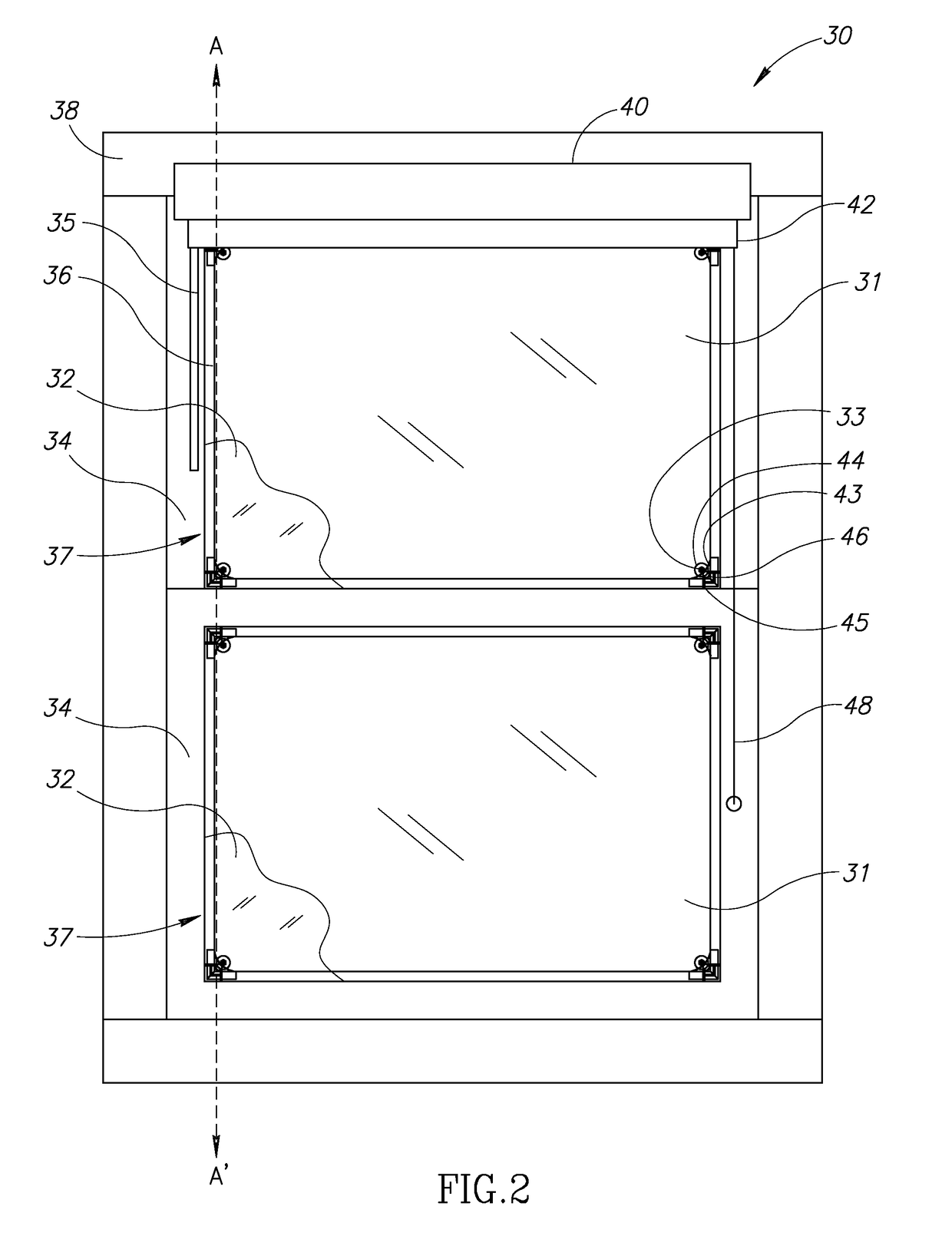Frameless supplemental window for fenestration
a frameless, supplemental window technology, applied in the field of supplemental windows, can solve the problems of preventing more widespread and effective utilization, limiting the application of supplemental windows, and difficult manufacturing of size customization, so as to maximize thermal insulation properties and mechanical stability, and add rigidity and strength
- Summary
- Abstract
- Description
- Claims
- Application Information
AI Technical Summary
Benefits of technology
Problems solved by technology
Method used
Image
Examples
Embodiment Construction
[0056]The invention is described below, with reference to detailed illustrative embodiments. It will be apparent that the invention can be embodied in a wide variety of forms, some of which may be quite different from those of the disclosed embodiments. Consequently, the specific structural and functional details disclosed herein are merely representative and do not limit the scope of the invention.
[0057]The present invention provides for several embodiments for mounting of sheet material in or over fenestration and substantially enclosing a volume of gas in or adjacent to the fenestration. The term “frameless supplemental window” in the present invention refers to a supplemental window that lacks a substantially rigid or non-flexible structure surrounding an area that is approximately the same size as the window pane on which the supplemental window is to be mounted.
[0058]In the present invention, in one embodiment, sheet material, a spacer or post of predetermined dimension perpen...
PUM
 Login to View More
Login to View More Abstract
Description
Claims
Application Information
 Login to View More
Login to View More - R&D
- Intellectual Property
- Life Sciences
- Materials
- Tech Scout
- Unparalleled Data Quality
- Higher Quality Content
- 60% Fewer Hallucinations
Browse by: Latest US Patents, China's latest patents, Technical Efficacy Thesaurus, Application Domain, Technology Topic, Popular Technical Reports.
© 2025 PatSnap. All rights reserved.Legal|Privacy policy|Modern Slavery Act Transparency Statement|Sitemap|About US| Contact US: help@patsnap.com



